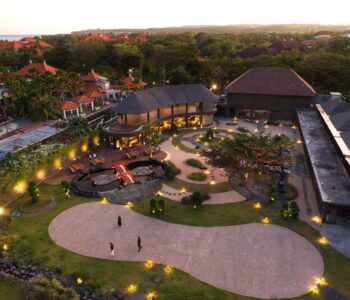

On the right: Body without memory (2021), Acrylic on canvas, 75 x 75 cm.
What is it?
A seething mass of grotesque, semi-monstrous beings—still clinging to the last fragments of human familiarity. They writhe, jolted by colour, as if ruptured from the womb of non-being. There is no urge to describe, confess, or purge. Instead, one senses a pulsing energy—feral, alien, perhaps malevolent. These entities do not merely intrude. They hover. They wait at the edge of perception.
They follow no logic of life. Nor are they projections of repressed desire. They seem summoned from a deeper place, primeval, and nameless. They slither and lurch across the canvas: twisted limbs, amorphous silhouettes, identities forever in flux. Not monsters, sometimes even positive forces, but something more troubling: the fear that the formless might become real. In the cavernous darks of Kaek’s paintings, there is motion. There is life. Their life.
They are not chimeras or gargoyles —those have names, myths, safe containers. This… this is something else entirely. It terrifies not because it is monstrous, but because it wants to become real. It wants to belong. It wants to enter. A rival reality.
This is the psychological reality of the niskala. The invisible realm that shadows the seen world, or sekala. Kaek does not depict the niskala. He opens it.
Growing Among the Niskala Forces
Kaek was born into this vision, in Sukawati, the cradle of Bali’s puppet theatre. As a child, he often heard the chants of the dalang echoing through the night, summoning spirits from the niskala to animate the puppets. But the voices didn’t end there. When illness struck, his parents would take him to the balian (shaman), who became the channel for the unseen realm. Coarse, otherworldly voices filled the room—shrieks, murmurs, and reprimands from wandering souls. Rituals were held to restore balance, to hush the rumble, to cool the breath of what had broken through.
This world left a deep imprint on Kaek’s psyche. Yet he didn’t follow its path immediately. He studied law, not art. His early career led him not to a studio, but to managing a kayaking company on the Ayung River. During student years in Yogyakarta, he mingled with socially engaged Balinese artists and began to draw and paint, but he never claimed the title of ‘artist.’ He lacked not talent, but the analytical framework demanded by the modernist orthodoxy taught at ASTI, the famous Yogyakarta art school, exhibiting occasionally as a visitor, not a disciple.
Art and the March of Rationality
What became of his artist friends? Like much of modern Balinese visual art since colonial times, they aligned with the sekala, the visible, the rational. Art carried prestige, recognition, a promise of income. It became, like ritual or holy water, a cultural regulator, containing the niskala, rather than invoking it. In Weberian terms, Balinese art was absorbed into the rational march toward education and modern identity, veering ever farther from enchantment.
It began with the pseudo-anatomies and Westernised perspectives of the Pita Maha movement, shaped by artists like Spies and Bonnet in the 1930s. It evolved into exotic realism, then into semi-abstract religious symbolism, and finally into political or conceptual art, as higher education introduced new frameworks. In this progression, the dark subconscious and the unruly world of the niskala were steadily bypassed.
There was one brief exception: Made Wianta, during his Karangasem period. A friend and occasional mentor to Kaek, Wianta momentarily surrendered to the richness of the Balinese psyche—unfiltered and raw. He offered a glimpse of freedom. But Wianta moved on, prioritising his contemporary awareness rather than his deep memory. Kaek watched this evolution.
The Return of the Repressed
Kaek stayed. Then came illness. Serious, lingering, almost terminal. For months, he hovered between worlds. What emerged from that brush with death were not sketches, but visions. He, who had never made more than scribbles, began to let loose what haunted his nights: beings, companions, forces—some to guide, others to devour—on a path toward purification or obliteration.
Unlike Western primitivist artists like Dubuffet or the members of the Cobra group in revolt against rationalism, Kaek does not engineer form to reinvent primal innocence. He is no imitator of the West’s art history. Is he brut? No, too fluent. Is he an outsider? Perhaps. But he is also something long missing in Balinese art: the one who dares return it to its origins—as a channel, a container, a negotiation with the ever-gurgling niskala. The psyche turned into an element of belief.
His paintings do not mirror the world. They rupture it. With pigments that behave like wounds, and compositions that churn with unresolved form, Kaek summons a psychic surplus that cannot be named, only confronted. His canvases tremble with that ancient Balinese intuition: that what we see is only half the story.
A Door to the Unknown
If Balinese art has long served to civilize experience, to domesticate the rawness of the spiritual realm, Kaek reverses this flow. He untames. He reopens what modernity tried to contain. Not as spectacle, but as initiation.
His art offers no solutions. It does not explain. It does not preach. It stares. And in that silent stare, we are invited to feel what the Balinese have long known but modernity forgets: that the world is always more than what it appears to be.
Kaek’s paintings are not reflections. They are breaches. Through them, the unknown stares at us, and we watch it, flabbergasted.









